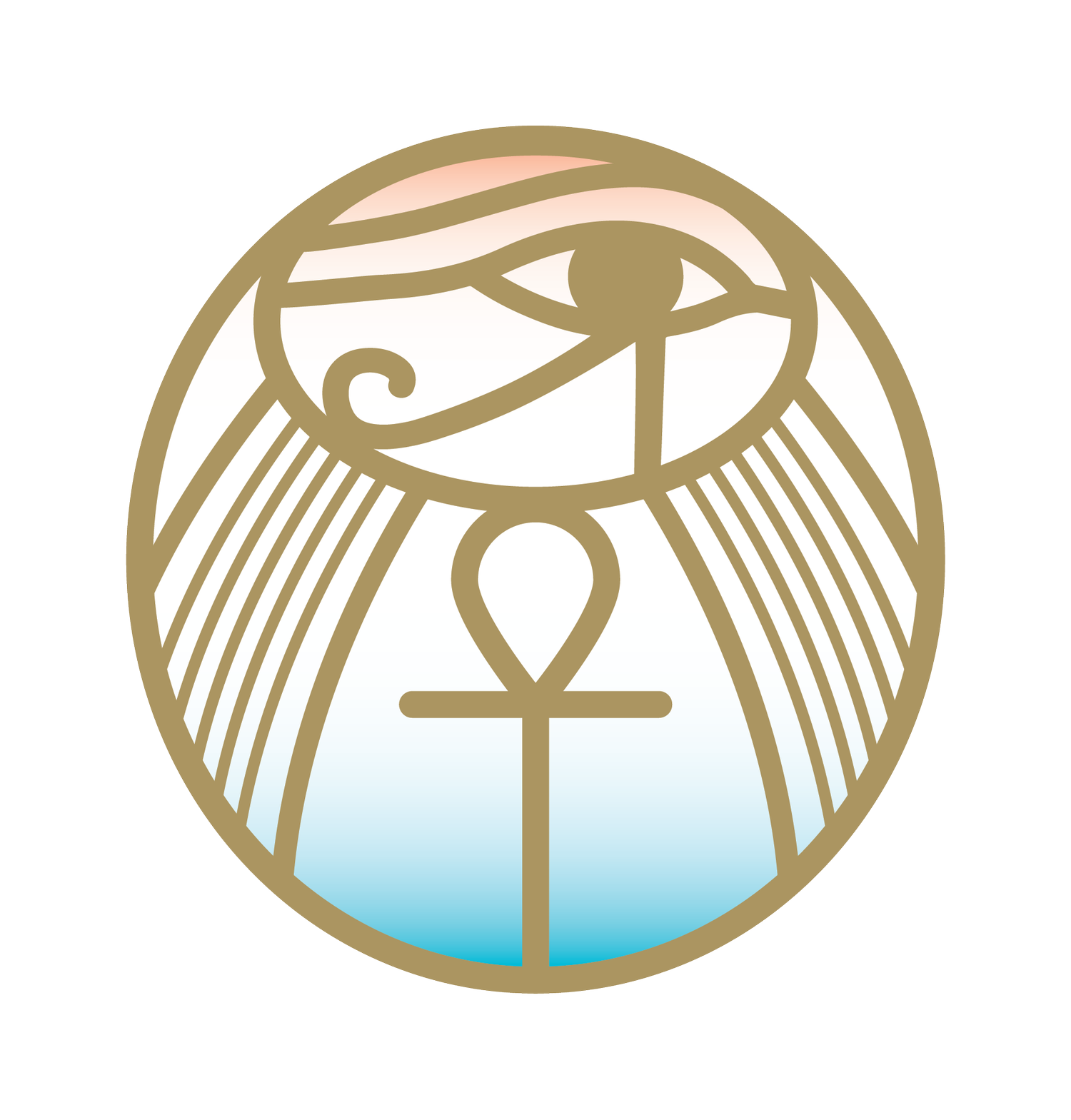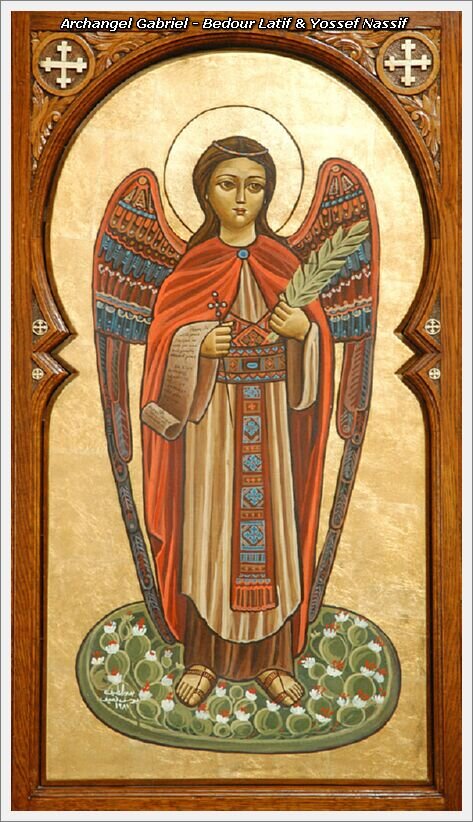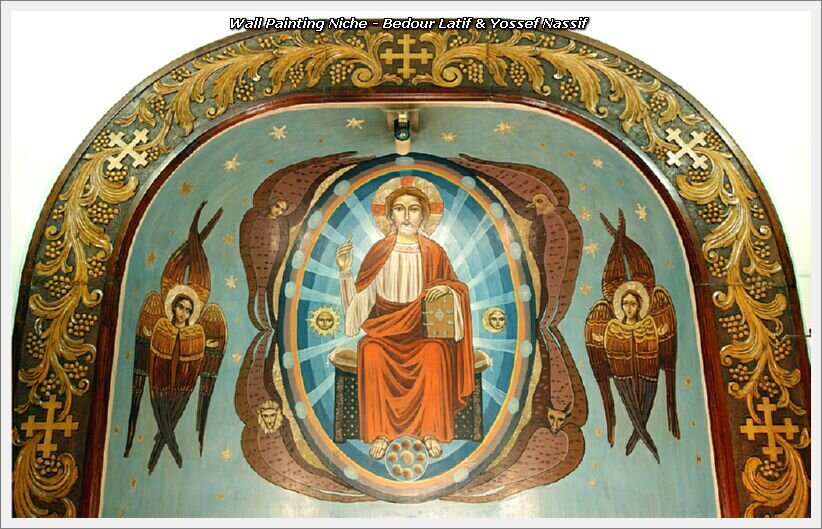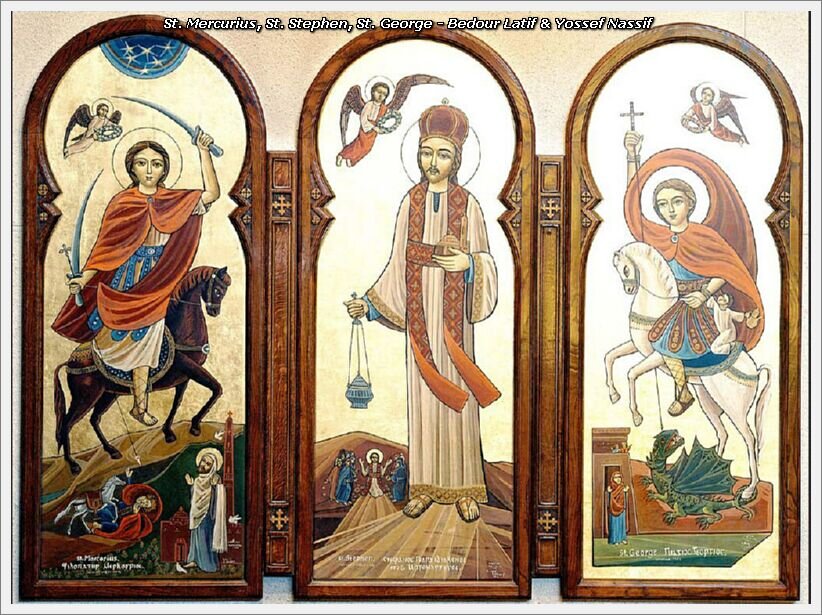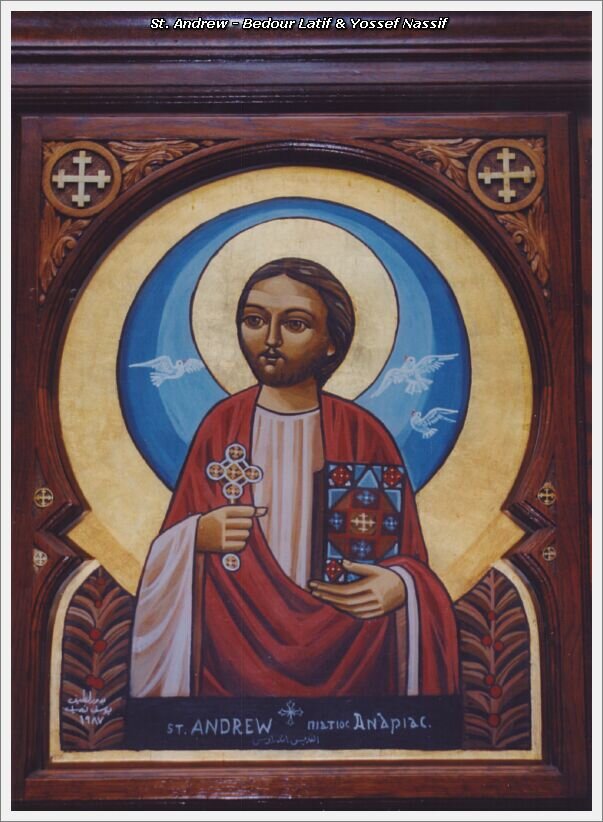
BEDOUR LATIF & YOUSSEF NASSIF
Dr. Bedour Latif Gorgi (1922-March 20, 2012)
1946 B.A. in Fine Arts
1961 Diploma from the Institute of Coptic Studies in Art and Architecture
1963 Professor of Visual Arts at the Institute of Coptic Studies where she continued to teach until retirement.
Dr. Youssef Nassif (1920 – October 9, 2013)
1961 B.A. In Fine Arts and Coptic Art and Archeology
1961 Diploma in Antiquities and ancient Egyptian Languages
1963 Professor of Coptic Studies and Deputy Director at the Art Department Institute of Coptic Studies until retirement.
Drs. Bedour Latif and Youssef Nassif met as students in the Institute of Coptic Studies in Cairo and married and writing icons for well over 50 years. In the early days of artistic development, they studied for a brief period in Italy. Youssef and Bedour were contemporaries of Dr. Isaac Fanous and together with him took the lead in the renaissance of Coptic culture and art since the 1950s.
Bedour and Youssef constantly searched to create a genuine Coptic style of iconography in form, essence and imagery:
Historically they were influenced by ancient Egyptian art and the Fayoum portraits which are recognized in iconography as the precursors of icons
Their strongest influences were the pioneers of contemporary Coptic art: Raghed Ayyad, Habib Georgi, Marguerite Nakhla, Dr. Aziz Sourial, Ramsis Wissa Wassef, among others.
When they researched and studied art from other cultures they challenged themselves to create the “Coptic difference” or the uniqueness of what they understood as “Coptic”.
Their icons are signed jointly. When asked how they actually worked this out, this was their answer: In her transparent genuiness, Bedour said: “We met in art and live and work in that harmony.” In humour but with subtlety of meaning, Youssef responded with: “Four eyes can see more than two!” They touched each other’s brush to the extent that neither of them knew what the other had done even though they may have shared some pointers in the process. In effect their final work is a true unity of their brush and their spirituality. It is a harmony that captures the meditative and prayful expression of the saintly images they depicted. The expression of Christ the Pantocrator at St. Mark’s Church “welcomes” believers” to the Kingdom of God The almond shaped eyes and gentle shape of the lips is a dominant feature in the expressions of their icons.
As deeply spiritual people, Youssef and Bedour would pray and read about the saint’s life to capture the spiritual message in the form of art:
Bedour: “[so that] it is not just art that is created but a spiritual message that is communicated”.
One of the particularities of Bedour and Youssef style is what is sometimes called a “decorative” style. This however was not their intention as every touch of their brush has a spiritual meaning. Note, for example, the icon of Last Supper with the sheaths of wheat on either side of the icon and the vine tree to symbolize the source of the bread and the wine on the Eucharist table. Asked about the significance of flowers at the feet of Our Lord Jesus Christ and saints they commented: “God created the earth and it was beautiful. At the feet of Our Lord and the saints we must also express the beauty of God’s creation.”
Bedour and Youssef were artists with many talents. the Coptic Museum of Canada has in its collection hand carved copper crosses, icons, fresco models and an intricate reproduction of a fifth century hand carved brass church chandelier with hand blown glass containers for the oil and wick. They also donated amulets they created by exploring ancient Egyptian techniques and materials.
Bedour and Youssef have written icons for many churches, some which are:
in Egypt including St Mark’s Coptic Orthodox Cathedral in El Abasseya, Cairo
in Canada: Toronto and Montreal
in the US: Rhodes Island ( St. Mary and Mari Mena Church 1992); Atlanta (St. Mary’s Church); Texas (St. Anthony)
in Australia. Archangel Michael and St. Anthony, → See the Gallery
The Coptic Museum of Canada’s CD Library has a CD of over 450 icons they have written the world over.
The icons on the iconostasis at St. Mark’s Coptic Orthodox Church, Scarborough, were completed in 1987 and those on the North and South walls in 1988 – a total of forty-one icons in addition to the fresco in the Royal Altar niche.
The icons displayed below illustrate the scope of their art and are included in the Museum’s guided tours on the history, art and architecture of St. Mark’s Coptic Orthodox Church, the first Coptic Church in North America. The Church is located on the main floor of the same building.
Iconostasis
Crucifixion above Last Supper icon
Last Supper above Royal Altar door
St. Mary and Divine Child
Christ the Pantocrator
Annunciation above the north Altar door
Pentecost above south Altar door
Archangel Gabriel
Archangel Michael
Niche Wall Painting
St. Mark the Apostle
Baptism of Christ
St. Mary of Zeitoun
St. Cosmos & Damian, with their Mother
St. Mena
St. Pishoi the Perfect Man
St. Abrahm, St. Athanasius, St. Roweis
St Pachomius, St. Paul and St. Anthony, St. Shenoute
St. Mercurius, St. Stephen, St. George
St. Marina, St. Demiana, St. Barbara
St. Batholomew
St. Philip
St. John
St. Andrew
St. Peter
St. James
St. Matthew
St. Thomas
St. James
St. Simon
St. Thaddeus
St. Mathaias
